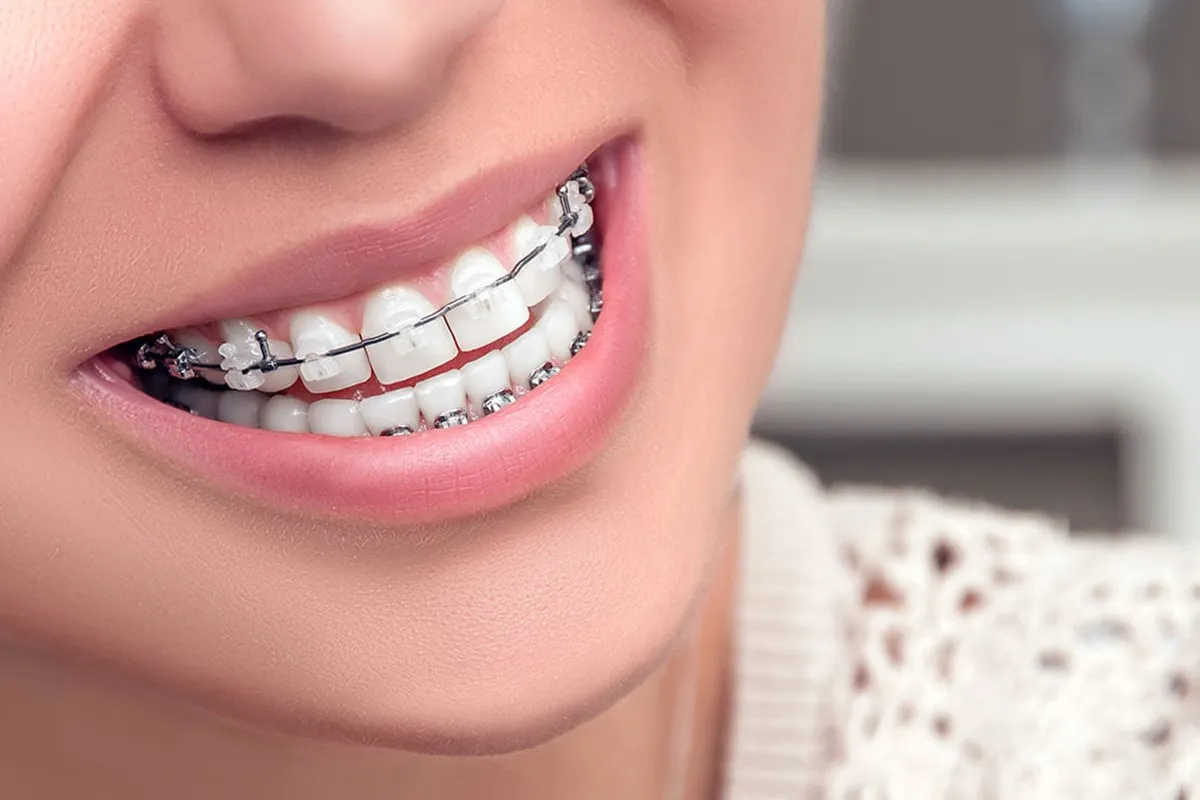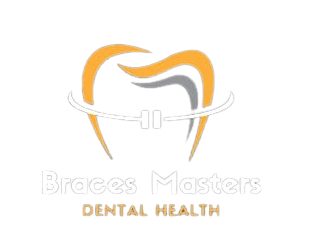Do you want to get braces, but because of the different types, you are confused about which type is most beneficial for you? So while choosing braces, you need to know which type can be effective for traditional characteristics, advantages, and disadvantages.
To enhance tooth alignment, different types of braces may be advised, including traditional metal braces, lingual braces, ceramic braces, self-ligating braces, and clear aligners like Invisalign. To determine the optimal course of treatment for any given patient, it is necessary to weigh the distinct benefits and drawbacks of each type.
You will need to see your orthodontist every few weeks while your braces are on for adjustments and progress monitoring. The length of time needed for braces treatment depends entirely on the issues your orthodontist is trying to solve and the type of braces you select; people typically wear braces for two years on average.
In order to keep their teeth from moving back into their original, incorrect positions after receiving braces, patients typically need to wear retainers. Knowing your options will help you select the ideal braces for your needs, regardless of your age and reason for seeking orthodontic treatment.
1. Traditional Metal Braces
Metal brackets and wires are used in traditional metal braces as part of orthodontic treatment. Teeth are straightened using metal brackets and wires, usually made of stainless steel.
Brackets are attached to the front surface of the teeth by wires that apply gentle and constant pressure to move the teeth in their desired direction. Traditional metal braces are one of the most common and effective methods of gradually straightening teeth. It uses body heat in the mouth to move teeth faster and with less pain than before.

Pros
- Efficient in treating complicated dental problems such as misaligned teeth and chewing issues.
- Correct teeth alignment and achieve your smile.
- May be less expensive than other orthodontic solutions.
- Metal braces are long-lasting and require very few adjustments once in the mouth.
- All the materials of the metal braces are bio-compatible, so there is no need to worry if something gets into the stomach.
- After the brackets and wires are attached, colorful bands are placed on them. You can choose your favorite color and change it at each visit.
Cons
- Visible appearance may be a consideration of some patients, they may impact your aesthetics or self-confidence.
- There will be irritation and an unusual feeling in the mouth for a few days.
- During the treatment, brush with a special technique and take special care of your oral hygiene.
- Avoid food-related foods that are hard, sticky, and crunchy, like zinger burgers and broast, etc.
2. Ceramic Braces
One kind of orthodontic braces called ceramic braces is constructed from a clear or tooth-colored ceramic material. Compared to conventional metal braces, they are meant to be less obvious.
Ceramic braces work just like metal braces. Using brackets and wires to gradually straighten teeth. This is the best option for those who have aesthetic issues and are not comfortable with metal braces.

Pros
- Compared to metal braces, ceramic braces are more visually attractive and less conspicuous.
- It is a very durable option because it doesn’t allow stains and discoloration to develop on the teeth.
- In general, wearing ceramic braces is more pleasant and doesn’t irritate the cheeks or gums as much.
- They are effective in solving problems like crowded teeth, cross-biting, and gaps.
Cons
- Ceramic braces are more expensive than metal braces, which is why fewer people choose this option.
- After wearing ceramic braces, more attention should be paid to oral hygiene because the ceramic brackets are large, which can easily trap food particles.
- The treatment period for ceramic braces can be longer as they are not as strong as metal braces and may take time to adjust and align the teeth.
- Compared to metal braces, ceramic brackets are more prone to chipping and breaking.
3. Lingual braces
There is a type of orthodontic treatment called lingual braces that are placed on the back side of the teeth so that they are unnoticeable from the front. Lingual braces are made of metal and look similar to traditional braces, but they are attached to the inner surface of the teeth, making them difficult to see from the outside.

However, they often take longer to achieve the desired alignment of the teeth and are less effective than traditional braces. Since they are attached to the inner surface of the teeth and are in direct contact with the tongue, they could also cause discomfort to the patient. and lastly, cleaning them is typically more challenging.
Lingual braces are a common choice for people who want to straighten their teeth without showing anyone. Therefore, they can be more difficult to maintain and adjust compared to traditional metal braces.
Pros
- Lingual braces are practically undetectable from the front since they are affixed to the rear of the teeth.
- They are specially designed to fit each patient according to their needs, guaranteeing a comfortable and cozy fit for the patient.
- Lingual braces are efficient for treating a variety of dental problems, such as tooth crowding, bite issues, and misalignments.
- When lingual braces are used instead of regular braces, treatment results can sometimes be obtained more quickly.
Cons
- Initially, there will be difficulty speaking or tongue irritation.
- The specialized design of lingual braces and the additional skill needed for placement often make them more expensive than regular braces.
- Lingual braces are more difficult to clean than other braces.
- Some orthodontists do not practice lingual braces. This eliminates options and availability for the patient.
4. Self-ligating braces
Self-ligating braces are also a modern type of orthodontic treatment that works like metal braces. They do not require O-rings or elastics but instead have a door-like clip to hold the wire in place, which holds the wire to the brackets.
Self-ligating braces do not irritate, but they provide more comfort than metal braces, as there is nothing between them to cause discomfort or food particles to get stuck in the brackets. This allows both brushing and oral hygiene to be maintained and is specially designed for patients to make teeth movement more comfortable, faster, and freer, which is more effective in achieving a gorgeous smile.

Pros
- More comfortable than traditional braces.
- Oral hygiene is easy to maintain due to the absence of elastic ligatures.
- Fewer orthodontic appointments are required during treatment.
- Less friction and stress on the teeth, which could result in shorter treatment periods.
Cons
- The cost is higher than traditional braces.
- Not suitable for severe orthodontic problems.
- Restricted availability and dearth of orthodontists specializing in this type of treatment.
- Possibility of a prolonged chair period throughout primary installation and afterward adjustments.
5. Invisalign and Clear Aligners
Clear aligners such as Invisalign have gained a lot of popularity over the past few years as an alternative to traditional braces. They are designed in such a way that the custom plastic trays gradually move the teeth into alignment through controlled pressure.

Invisalign is a great option for patients who had braces at a young age and now just want a touch-up. as well as for individuals with mild to moderate dental issues such as a big overbite, mild crowding, problems with the alignment of the jaw, and gaps in the front teeth. But when it comes to treating complex problems or requiring extensive treatment, any clear aligner system, including Invisalign, has significant limitations compared to traditional braces.
They are usually switched out after a few weeks to keep straightening the teeth. These aligners are easy to remove and reattach during treatment, with most patients needing about 18 to 30 different aligners to achieve the intended outcomes.
Pros
- Invisalign aligners are virtually invisible, leaving the patient aesthetically satisfied.
- Can be taken off when needed for eating and drinking and for better oral hygiene. Also, you don’t have to be very careful with dietary restrictions.
- Gives good results for mild to moderate orthodontic problems.
- There is no irritation or discomfort due to the absence of brackets and wires.
cons
- Aligners must be worn for at least 20 to 22 hours a day to achieve effective results and should only be removed at mealtimes.
- Invisalign is not suitable for severe and complex orthodontic cases
- It can cost more than traditional braces.
- Initially, aligners may take some time to adjust to your lips and tongue and get used to
conclusion
There are many alternatives available in the braces market to meet the demands and desires of patients seeking orthodontic treatment. From traditional braces to clear aligners, all types of braces are available on the market with their own unique and special attributes, advantages, and factors. Finally, when choosing braces, consider factors such as the intensity of your orthodontic problems, aesthetic preferences, and other lifestyle factors.
A consultation with an experienced orthodontist is essential so that they can prescribe the best treatment plan based on your individual needs and your clinical condition.
If you have any questions about different types of braces, then contact us. We will try our best to help you.
You can also follow us on Facebook, Instagram, Twitter, and TikTok.

Pingback: 10 Braces Tips You Need To Know | Routine Braces Care
Pingback: How To Choose The Best Braces Color For Your Teeth